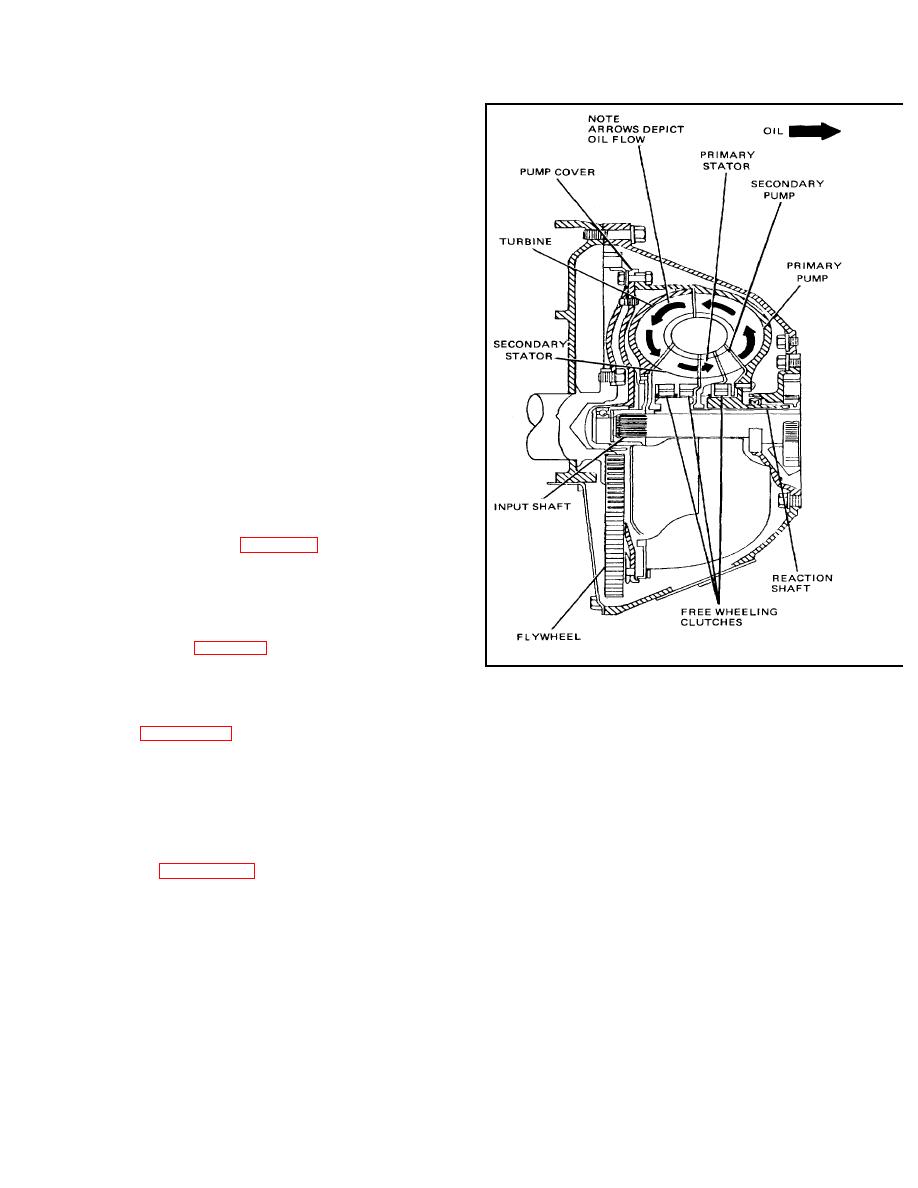
| Tweet |

Custom Search
|
|

|
||
 TM 9-8000
tween the driving and the driven shafts. It actually can
take the place of the conventional transmission because,
with it, there is no need for gearshifting; the vehicle can
be accelerated from a standing stop to high speed with
the torque converter providing, in effect, the varying gear
ratios. In actual practice, the torque converter is used
with a gear system (including planetary gears) to provide
a high range (for normal operation), a low range (for
steep hills, or pulling out of mud), reverse, and neutral.
There also may be a parking position at which the gear
system is locked.
21-8. Operation.
a. All torque converters have a driven member (called
the turbine) and a driving member (called the pump). In
addition, they have one or more other rotatable members
(or elements) placed between the pump and the turbine
that have the purpose of changing the direction of oil flow
under high-torque-multiplication operation. Figures 21-
16 and 21-17 show torque converters in sectional and
cutaway views.
b. The primary action of the torque converter results
from the action of the pump in passing oil at an angle into
the blades of the turbine (fig. 21-16). The oil pushes
against the faces of the turbine vanes, thereby tending to
cause the turbine to rotate in the same direction as the
pump. If the pump is rotating much more rapidly than the
turbine, the oil enters the turbine and pushes against the
turbine vanes with great force. As the oil passes around
through the turbine (fig. 21-17), it imparts force against
the turbine vanes, all along the vanes. But it does not
give up all of its force of motion to the turbine vanes. It
Figure 21-16. Torque Converter - Partial
still has considerable energy, even though passing
Cutaway View.
through the turbine has reversed its direction of motion
as shown in figure 21-17. If this reversed direction of
(secondary stator and primary stator) reverse the
motion were not changed, the oil would reenter the pump
direction of the oil into a forward, or helping, direction
in a direction opposing pump rotation. It would act as a
before it reenters the pump. Then, the oil once more Fs
brake on the pump, tending to slow it down. Considerable
passed into the turbine from the pump, adding more
engine power would be consumed in overcoming this
push to the turbine vanes. During this action, the stators
action. However, the additional members in the torque
are stationary and act simply as oil-direction reversers.
converter again change the direction of the oil before it
reenters the pump, thereby avoiding loss of power. As
c. It is this continuous passing of the oil from the pump
can be seen in figure 21-18, the curved blades of the
into the turbine, back to the pump,
added members
TA23368
7
21-15
|
||
 |
||